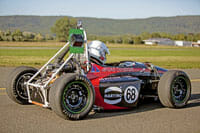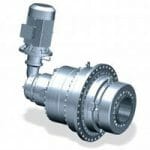Harting has joined forces with the University of Osnabrück in Lower Saxony, Germany, in an experiment to verify the ability of the company’s RFID (radio-frequency identification) systems to detect objects moving at high speeds.
The object of the exercise is to determine how fast a vehicle can go and still be detected with maximum reliability using RFID. This question is highly relevant in real-world practice, as demonstrated by areas of application such as warehousing and rail transport.
Modern warehouse systems can involve objects moving at speeds exceeding 50 km/h and today‘s freight trains can reach up to 160 km/h. Reliable detection and error-free identification of goods and vehicles are essential for process safety at these high speeds – and high process reliability is the only way to ensure time and cost savings. Data must be collected quickly and safely in order, for example, to specifically direct goods onto a different conveyor belt or activate signals in railway environments.
The RFID team at Harting Technology Group investigated the question of “how fast is fast” in a joint effort with the Ignition Racing Team (IRT) of the Osnabrück University of Applied Sciences. As part of the Formula Student project, the IRT develops and builds its own racing cars. The performance metrics are spectacular: up to 1400 Nm of torque accelerate the race cars from zero to 120 km/h on a 75 m track – a normal car requires several times this value.
The experimental setup for the Harting RFID test was very simple: each racing car was equipped with an RFID transponder, and an RFID reader and antenna were situated alongside the track. The results were evaluated in real time in Harting’s Ha-VIS Middleware and written to a file – in exactly the same process as would be implemented in an actual customer application.
As a warm-up exercise, an electric racing car drove past the RFID antennas at 80 km/h. All systems functioned successfully and the car was reliably detected. The second race, involving an electric racing car at 120 km/h, also resulted in the vehicle being reliably detected. However, the electric cars only have a maximum speed of 120 km/h since the Formula Student project only uses a narrow track or involves a 75 m sprint. Consequently, in the third round a racing car with a combustion engine was used, reaching a top speed of 160 km/h (which is extremely fast for the Formula Student racing cars).
Even this failed to push the RFID technology to its limits, and so a roadster from a famous German manufacturer was driven in one last run. The result was startling: even at 200 km/h, the vehicle was quickly and reliably detected.
This final test involved a unique electronic product code with a length of 96 bits being successfully read nine times, proving the functionality of RFID technology at top speeds.





